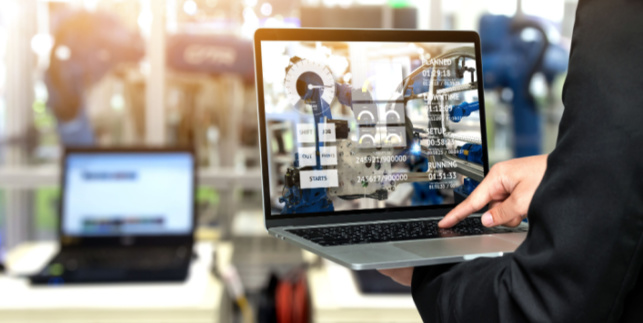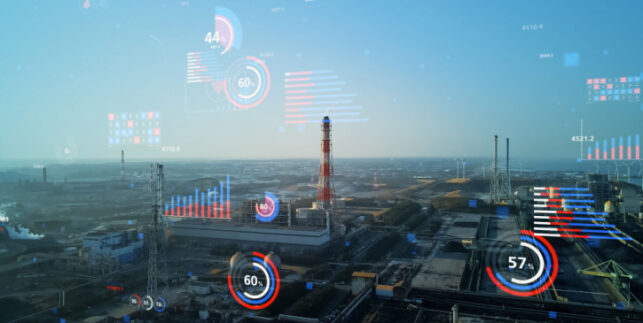
As digital transformation of manufacturing accelerates globally, processes have become faster and more data is being collected than ever before. Advanced industry 4.0 technologies and tools and other automated systems are increasingly vital in modern factories.
Despite these advancements, however, manufacturing companies still struggle with end-to-end monitoring in real time. There are parts of the factory floor that remain siloed and opaque, the data unavailable without stopping the line to physically inspect machines.
The end goal of digital transformation in manufacturing should be real-time operational intelligence. This type of insight can help reduce downtime, lower costs, increase efficiency, and more. Here’s what you need to know.
What is Real-Time Operational Intelligence?
Real-time Operational Intelligence (RtOI) is the next generation of manufacturing digitalization intelligence. It connects industry 4.0 practices and empowers businesses to intelligently transform mass amounts of data into real-time actionable insights that are accessible at all times.
An RtOI system brings together data from machines, systems (like an ERP), and people for a fully transparent, end-to-end view of factory operations. With real-time insights, factories can reduce downtime, increase efficiency, reduce waste and better control costs.
We asked experts in digital transformation of manufacturing for their perspective on how smart systems can benefit businesses and how manufacturing leaders can get started implementing them.
Moving from Reactive to Proactive
End-to-end digital transformation for manufacturing is essential for businesses to remain competitive. Says Linda Grasso, digital transformation expert and CEO of DeltalogiX, “It’s crucial to recalibrate strategies and operations by adopting a holistic digital approach. From building the digital core to transforming the business model, by embracing industry 4.0 technologies, leaders can pave the way for success.”
One way manufacturing leaders can do this is by integrating their suite of smart technologies into a single data solution. This enables leaders to move beyond static analysis and embrace real-time data: “Connecting devices within a cyber-physical environment allows tracking and tracing analytics and KPIs on a continuous basis,” Linda says. The visibility that an RtOI system brings can make it easier to measure success, spot problems, and improve over time.
In fact, every resource in the manufacturing process can be strengthened by digital transformation. says Giuliano Liguori, founder of Digital Leaders, digital transformation consultant, and an expert in OT and IT convergence: “People, ideas, physical and financial assets are enhanced by digital technologies.”
Technologies that are driven by real-time data specifically add value by providing manufacturers with “new, powerful capabilities to address the challenges in a difficult economy,” says Giuliano. These capabilities include on-demand scaling of operations, resource allocation, and more nimble reactions to customer expectations. With an RtOI system in place, this can also mean using real-time data to respond to problems on the shop floor faster.
When you can see more, you can do more
By continually aggregating the data produced by people, machines and systems, factory supervisors get a detailed view of what is happening on the shop floor in real time. This enables manufacturers to shift from a reactive to a proactive approach to shop floor management.
However, simply aggregating data is not enough. A centralized data repository enables different stakeholders to directly access the information they need. For example, a shop floor supervisor needs actionable information about what is happening right now, while an executive may want to pull data from multiple facilities at a moment’s notice.
As manufacturing technology accelerates and more companies embrace digital transformation, the silos between informational and operational technology start to come down. Giuliano says, “we are seeing a convergence of IT and OT that is paving the way for the full potential of Smart Factories.”
This convergence makes full end-to-end transparency possible. This includes adding connectivity capabilities to legacy machines on the factory floor. With internet of things (IoT) sensors and an RtOI solution, it’s possible to digitize information that used to only be available by physically examining the machine.
Level Up Your Manufacturing Operations
As the benefits of digital transformation become clearer, more manufacturing leaders are looking to adopt industry 4.0 tools and practices. But the process can seem daunting.
Giuliano observes that transformation “requires time, commitment, resources and most importantly, an openness to both organizational and technological change.” The mindset part of the equation is just as important as the technology; willingness to support a digital transformation initiative is a prerequisite for success.
Since RtOI involves the entire production process, it’s important to take a big-picture view when getting started. Says Linda: “For manufacturing leaders, it’s crucial to recalibrate strategies and operations by adopting a holistic digital approach.”
This doesn’t mean, however, that a business needs to transform all at once or not at all. A cloud-based RtOI solution makes it possible to start small, with just a few machines on the factory floor, and scale up from there.
Once the entire factory is connected with an RtOI solution, the benefits are concrete, measurable and substantial. Our customers average a 25% increase in machine availability, 30% decrease in rejects, and 10% reduction in energy consumption, among other benefits.
Start Seeing Your Factory in Real Time
When industry 4.0 approaches are used on their own, they provide great benefits to manufacturers through what is commonly known as a Smart Factory. But when they are connected, they form an RtOI system that pulls data from smart systems, individual machines, IoT sensors, human operators, and more into a single location to provide a current, high resolution image of what is happening on the shop floor now so any problems that arise can be dealt with immediately, not hours later.
To learn more about RtOI and how Matics make it possible, request a demo.





